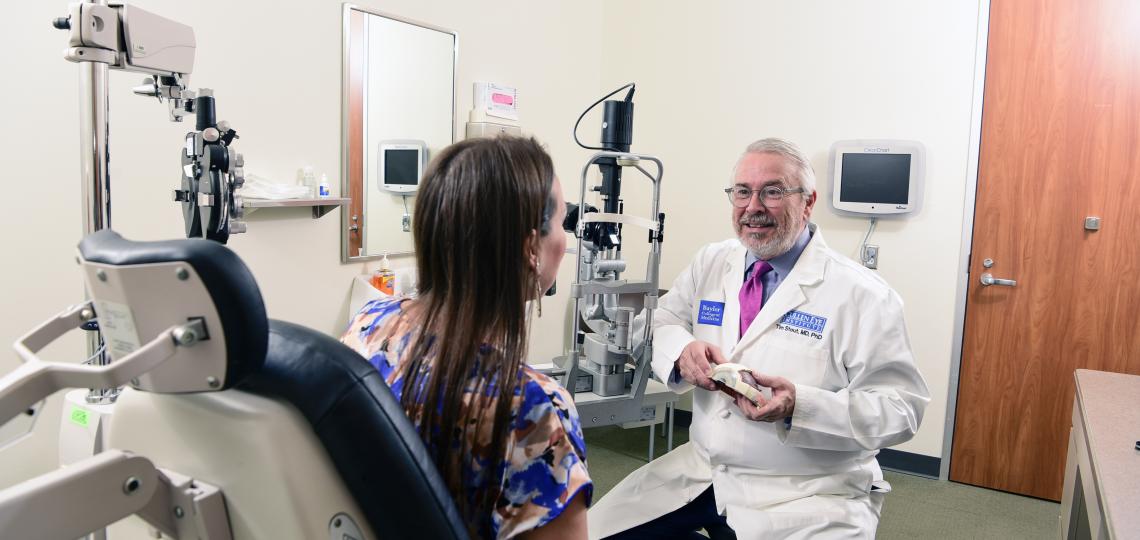Discover Andalusia's Best Cardiologist Clinics and Services
Discover Andalusia's Best Cardiologist Clinics and Services
Blog Article
The Advantages And Disadvantages of Various Refractive Surgical Procedures for Improved Eyecare

LASIK Surgery
LASIK surgery is a generally carried out refractive procedure that intends to deal with vision concerns such as farsightedness, nearsightedness, and astigmatism. During the procedure, a slim flap is developed on the cornea, and a laser is utilized to improve the underlying tissue, correcting the refractive mistake.
One of the main benefits of LASIK surgery is the fast enhancement in vision experienced by lots of clients. It is vital for people taking into consideration LASIK surgery to go through a comprehensive assessment by an eye treatment expert to establish if they are ideal prospects for the treatment.
PRK Treatment
The PRK procedure, additionally known as Photorefractive Keratectomy, is a kind of refractive surgical treatment that intends to correct vision issues similar to LASIK surgical procedure. Unlike LASIK, which includes producing a flap in the cornea, PRK functions on the surface area layer of the cornea.
One of the advantages of PRK over LASIK is that it eliminates the threat of flap-related problems given that no flap is created throughout the surgical treatment. This can be advantageous for people with thin corneas or those associated with get in touch with sports where eye injury is an opportunity. The healing time for PRK is commonly much longer compared to LASIK, as the external layer of the cornea needs time to regenerate after the treatment. Regardless of the longer recovery period, PRK can be an appropriate choice for people looking for vision improvement surgical procedure.
SMILE Surgical Procedure
A cutting-edge refractive surgery technique obtaining popularity in the field of ophthalmology is SMILE Surgery. Small Cut Lenticule Extraction (SMILE) is a minimally invasive procedure that deals with vision by improving the cornea using a femtosecond laser. Unlike typical LASIK surgical treatment, SMILE Surgical procedure involves creating a small cut in the cornea to remove a lenticule, which results in less interruption to the corneal structure and possibly much faster recovery times.
One of the primary advantages of SMILE Surgical procedure is its ability to deal with nearsightedness (nearsightedness) and astigmatism with high precision, resulting in superb aesthetic results for patients. The minimally invasive nature of the procedure also reduces the threat of problems such as dry eye disorder, making it a desirable alternative for people seeking refractive surgical treatment.

LASEK Strategy
Having actually discovered the advantages and considerations of SMILE Surgical procedure, an additional significant refractive surgical treatment technique worth examining is the LASEK Strategy. LASEK, which stands for Laser-Assisted Subepithelial Keratectomy, is a form of laser eye surgery that intends to remedy refractive mistakes such as nearsightedness (nearsightedness), hyperopia (farsightedness), and astigmatism.
Unlike LASIK, LASEK does not include creating a corneal flap. Instead, during a LASEK treatment, the surgeon utilizes a diluted alcohol remedy to loosen up the slim outer layer of the cornea, called the epithelium. This layer is after that gently moved apart to enable the laser to improve the underlying corneal tissue. As soon as the cornea has actually been improved to the desired degree, the epithelial layer is rearranged.
One of the primary advantages of LASEK is that it can be appropriate for people with thin corneas who might not be excellent prospects for LASIK. Furthermore, LASEK commonly leads to very little post-operative discomfort and a quicker recuperation time contrasted to PRK. However, the visual healing procedure with LASEK may be a little longer than with LASIK.
Implantable Call Lenses
Implantable Contact Lenses provide a lasting vision correction service for people seeking an option to standard get in touch with lenses or glasses. These lenses, also referred to as phakic intraocular lenses, are operatively placed into the eye to remedy refractive mistakes such as nearsightedness (nearsightedness), hyperopia (farsightedness), and astigmatism. eye doctors in andalusia. Unlike traditional contact lenses that remain on the surface of the eye, implantable call lenses function within the eye itself, supplying clear vision without the requirement for everyday upkeep or removal
Among the essential benefits of implantable get in touch with lenses is their durability. When put, they can remain in the eye forever, using consistent and secure vision adjustment. Additionally, these lenses can be an exceptional option for individuals that are bad prospects for laser eye surgical procedure or who like a reversible vision correction treatment.
Nevertheless, implantable contact lenses do bring some risks, including the capacity for cataracts or raised eye stress. It is crucial for individuals considering this choice to seek advice from with an eye treatment professional to determine if implantable get in touch with lenses are the ideal option for their particular demands and eye wellness.
Conclusion
In conclusion, each kind of refractive surgical procedure has its own advantages and negative aspects. LASIK surgery is prominent for its fast healing time, while PRK treatment may be ideal for clients with thin corneas.

Overall, SMILE Surgery provides an encouraging alternative for people looking to improve their vision through refractive surgical andalusia pediatrics procedure.
Report this page